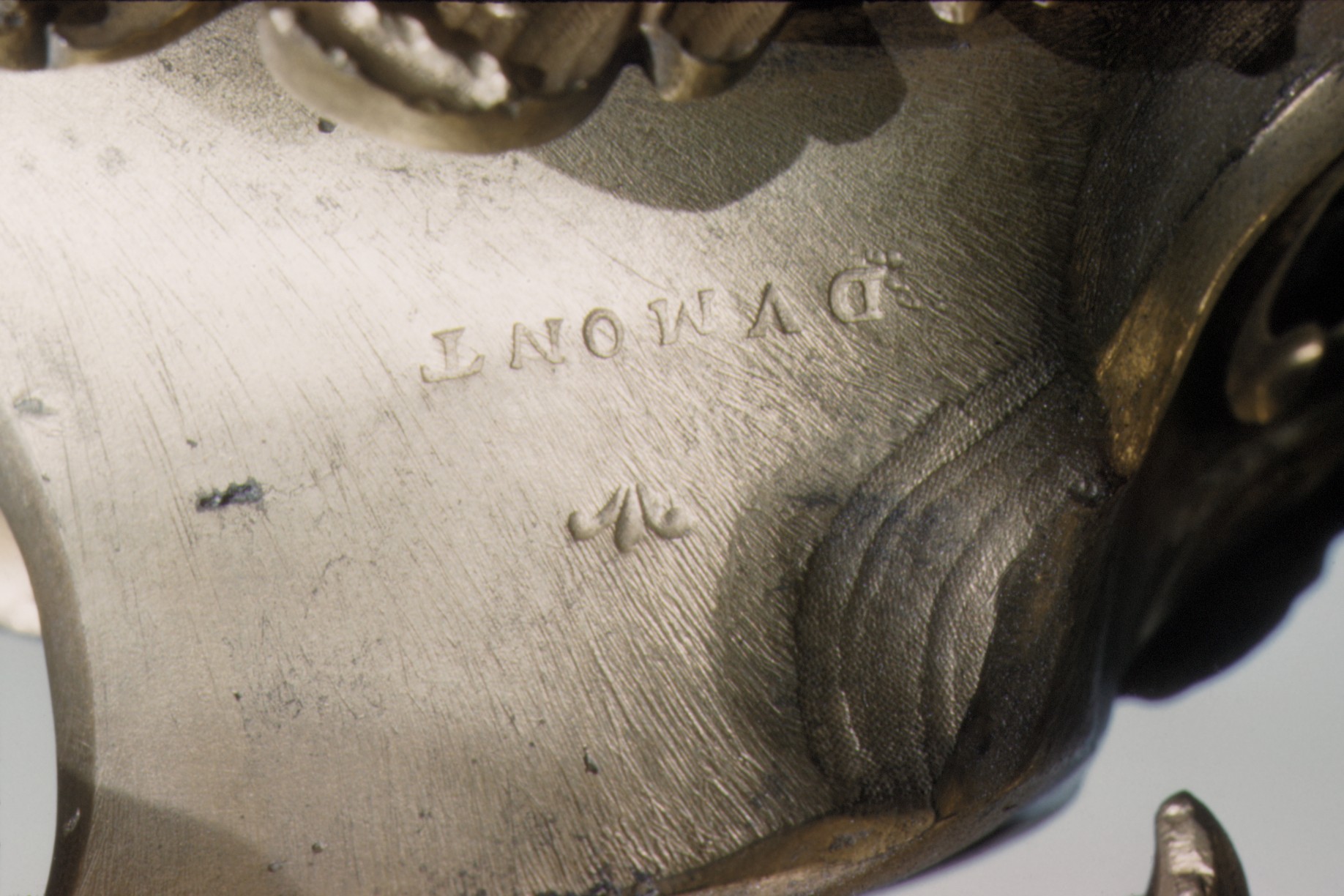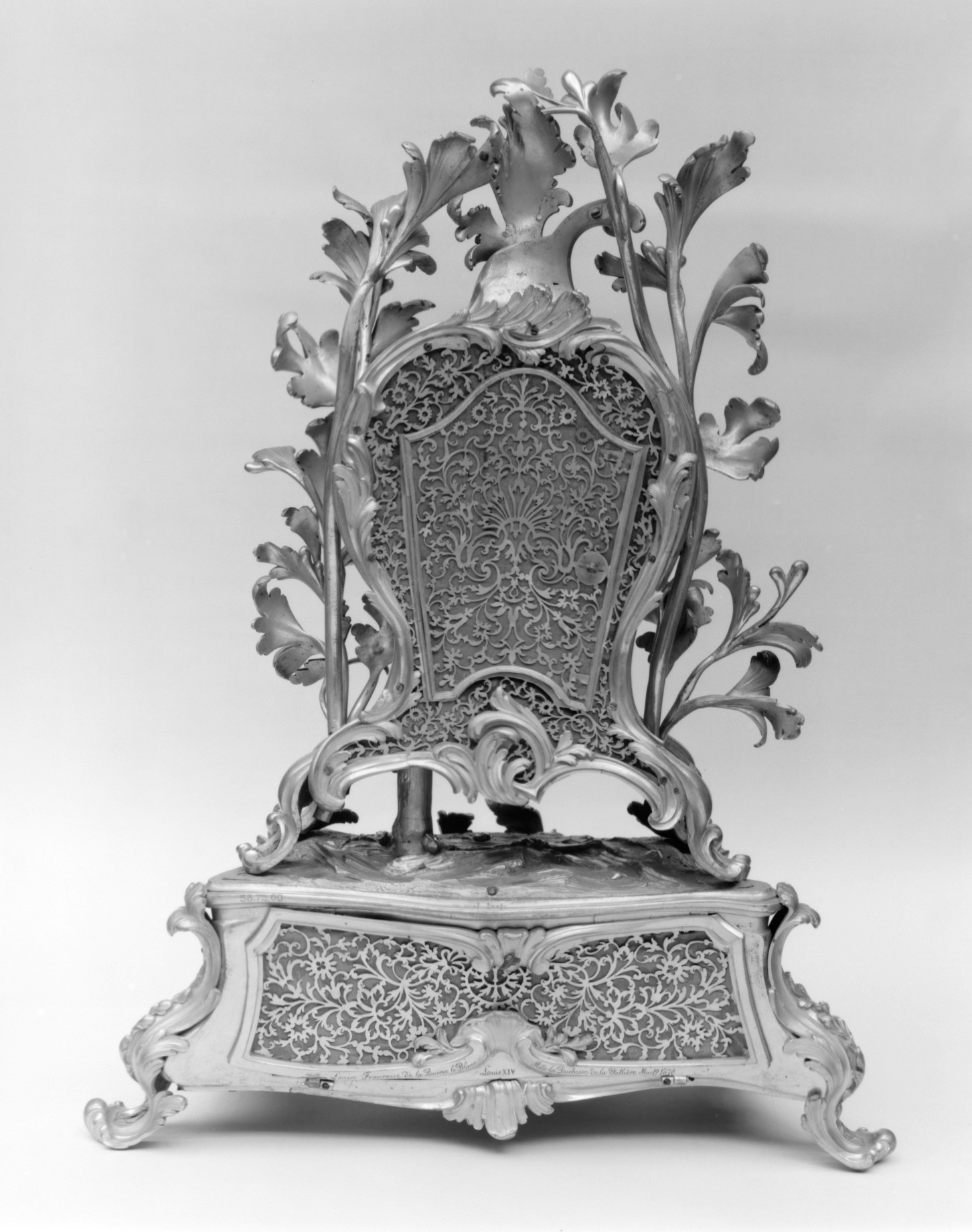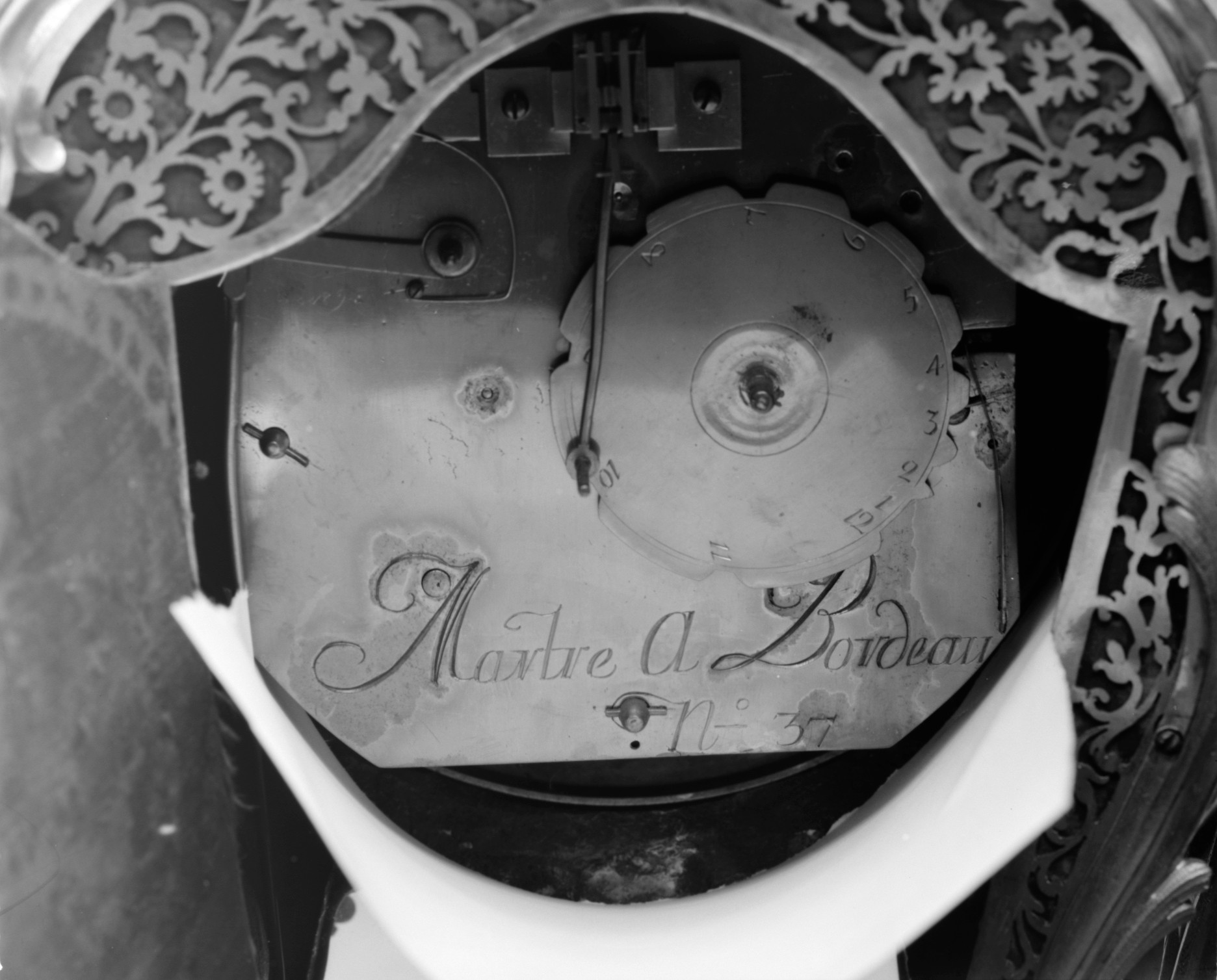Musical mantel clock (Pendule avec boîte à musique)
Clockmaker: Jean Baptiste Martre
Case possibly by Jacques Dumont
Both functional and highly decorative, gilt-bronze mounts and bronzes d’ameublement such as wall-lights, firedogs and clocks, played an important role in the French eighteenth-century interior. The artists, designers and sculptors responsible for their designs closely followed the latest stylistic changes.
Eighteenth-century French clockmakers took full advance of the luxury trades that flourished in Paris and beyond as they worked together to create movements to provide domestic clocks with splendid cases in various materials. The clock case and music box consist of scrolls and foliated branches, while a bag pipe decorates the front of the music box. The dial and back plate of this clock are signed MARTRE A BORDEAUX, a clockmaker about whom little is known. A Jean Baptiste Martre was born in Bordeaux in 1734 and remained active until 1785. Neither do we have any information about the bronze caster Dumont who signed the rococo-style case twice. Similar clock cases exist by Dumont with movements by other clockmakers. The fleur-de-lys mark found both on the clock case and the music box is unrecorded but may indicate a royal provenance.
The musical movement in the music box is composed of a set of steel bells struck by hammers tripped by a revolving drum. A rod which releases the musical movement passes from the clock through the tree trunk on top of the box.
It is likely that the clock would have been placed on a mantelpiece in front of a large mirror so that the ornate and intricate openwork design of the back, reminiscent of lace, would have been visible in the mirror’s reflection.
Due to rights restrictions, this image cannot be enlarged, viewed at full screen, or downloaded.
This artwork is meant to be viewed from right to left. Scroll left to view more.





